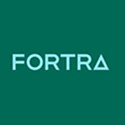Q: I use the Save Security Data (SAVSECDTA) command to back up security information on a weekly basis. However, when I use Display Object Description (DSPOBJD) for a user profile, the save information does not show the date and time of the backup. How can I see when I last saved user profiles?
A: Before I answer your question, you should be complimented for remembering to save the authorities on a weekly basis. Many installations have scheduled backup procedures for their data files but fail to save user profiles regularly. If the last save of the user profiles took place when you last executed a Save System (SAVSYS) command, it may be impossible to recover all the intervening changes to user profiles, authorization lists and the authority to objects. A weekly save of user profiles is important. User profiles can be saved by either a Save System (SAVSYS) or a Save Security Data (SAVSECDTA) command. The advantage of SAVSECDTA is that it does not require a dedicated system and can be done while users are signed on to the AS/400.
Now, for the answer to your question. IBM does not record the save and restore information in each user profile object. This improves the performance of the save operation since the information would be the same for all user profiles. IBM uses the QSAVUSRPRF data area in library QSYS to record the date and time for the SAVSECDTA command. To view the last time user profiles were saved, run Display Object Description (DSPOBJD)-and not the Display Data Area (DSPDTAARA) command-for data area QSAVUSRPRF. Specify *FULL for the DETAIL parameter to show the date and time of the last save operation.
Q: We want a group of users to share the documents created by other users. The users who should be able to share the documents are members of the same group profile and transfer the ownership of new objects to the group profile.
I encounter problems when PC users create new PC files which are stored as documents in an AS/400 folder. The PC files cannot be accessed by anyone else. The group profile owns the folder and public authority is *EXCLUDE. If we change the public authority to *ALL, the user can see the documents. However, if these documents are accessed through a PC package such as Lotus, a network security error is presented.
A: Document library objects (DLO) do not transfer ownership to the group profile like the other objects on the system. The creator of the document or folder (PC file or directory) will be the owner of the object even when the user profile says OWNER(*GRPPRF). New documents inherit their authority from the folder in which they are placed. Since the public authority to the folder is *EXCLUDE, the new documents (PC files) will also have *EXCLUDE and users other than the creator (even if they are members of the same group) will not have the required authorization to read the documents.
If you secure the folder by an authorization list, new documents added to the folder will also be secured by the same authorization list. If the group profile is on the authorization list, members of the group can access the documents, eliminating the network security problems. Only new documents will be secured by the authorization list. If documents already exist in the folder, you can use the Change DLO Authority (CHGDLOAUT) command to secure the existing documents by the same authorization list. This command supports *ALL for the name so all documents can be secured in one operation.


















 More than ever, there is a demand for IT to deliver innovation. Your IBM i has been an essential part of your business operations for years. However, your organization may struggle to maintain the current system and implement new projects. The thousands of customers we've worked with and surveyed state that expectations regarding the digital footprint and vision of the company are not aligned with the current IT environment.
More than ever, there is a demand for IT to deliver innovation. Your IBM i has been an essential part of your business operations for years. However, your organization may struggle to maintain the current system and implement new projects. The thousands of customers we've worked with and surveyed state that expectations regarding the digital footprint and vision of the company are not aligned with the current IT environment. TRY the one package that solves all your document design and printing challenges on all your platforms. Produce bar code labels, electronic forms, ad hoc reports, and RFID tags – without programming! MarkMagic is the only document design and print solution that combines report writing, WYSIWYG label and forms design, and conditional printing in one integrated product. Make sure your data survives when catastrophe hits. Request your trial now! Request Now.
TRY the one package that solves all your document design and printing challenges on all your platforms. Produce bar code labels, electronic forms, ad hoc reports, and RFID tags – without programming! MarkMagic is the only document design and print solution that combines report writing, WYSIWYG label and forms design, and conditional printing in one integrated product. Make sure your data survives when catastrophe hits. Request your trial now! Request Now. Forms of ransomware has been around for over 30 years, and with more and more organizations suffering attacks each year, it continues to endure. What has made ransomware such a durable threat and what is the best way to combat it? In order to prevent ransomware, organizations must first understand how it works.
Forms of ransomware has been around for over 30 years, and with more and more organizations suffering attacks each year, it continues to endure. What has made ransomware such a durable threat and what is the best way to combat it? In order to prevent ransomware, organizations must first understand how it works. Disaster protection is vital to every business. Yet, it often consists of patched together procedures that are prone to error. From automatic backups to data encryption to media management, Robot automates the routine (yet often complex) tasks of iSeries backup and recovery, saving you time and money and making the process safer and more reliable. Automate your backups with the Robot Backup and Recovery Solution. Key features include:
Disaster protection is vital to every business. Yet, it often consists of patched together procedures that are prone to error. From automatic backups to data encryption to media management, Robot automates the routine (yet often complex) tasks of iSeries backup and recovery, saving you time and money and making the process safer and more reliable. Automate your backups with the Robot Backup and Recovery Solution. Key features include: Business users want new applications now. Market and regulatory pressures require faster application updates and delivery into production. Your IBM i developers may be approaching retirement, and you see no sure way to fill their positions with experienced developers. In addition, you may be caught between maintaining your existing applications and the uncertainty of moving to something new.
Business users want new applications now. Market and regulatory pressures require faster application updates and delivery into production. Your IBM i developers may be approaching retirement, and you see no sure way to fill their positions with experienced developers. In addition, you may be caught between maintaining your existing applications and the uncertainty of moving to something new. IT managers hoping to find new IBM i talent are discovering that the pool of experienced RPG programmers and operators or administrators with intimate knowledge of the operating system and the applications that run on it is small. This begs the question: How will you manage the platform that supports such a big part of your business? This guide offers strategies and software suggestions to help you plan IT staffing and resources and smooth the transition after your AS/400 talent retires. Read on to learn:
IT managers hoping to find new IBM i talent are discovering that the pool of experienced RPG programmers and operators or administrators with intimate knowledge of the operating system and the applications that run on it is small. This begs the question: How will you manage the platform that supports such a big part of your business? This guide offers strategies and software suggestions to help you plan IT staffing and resources and smooth the transition after your AS/400 talent retires. Read on to learn:
LATEST COMMENTS
MC Press Online